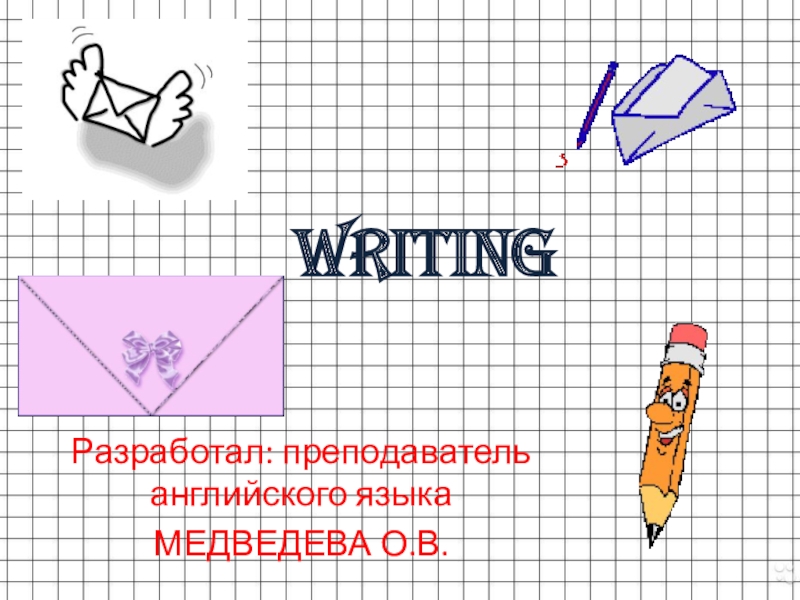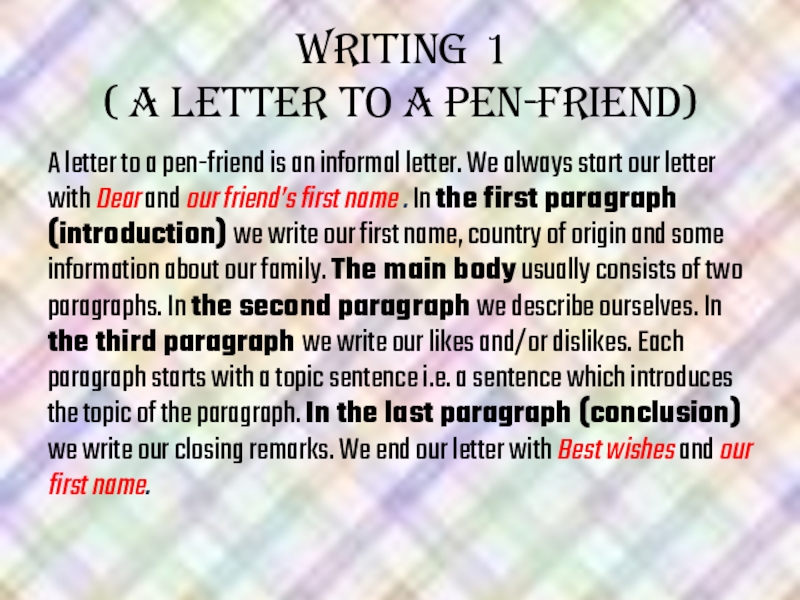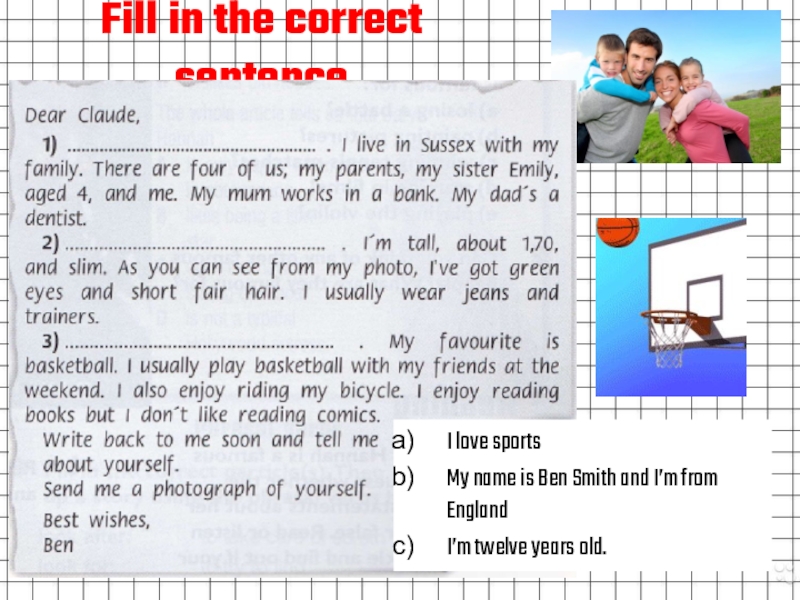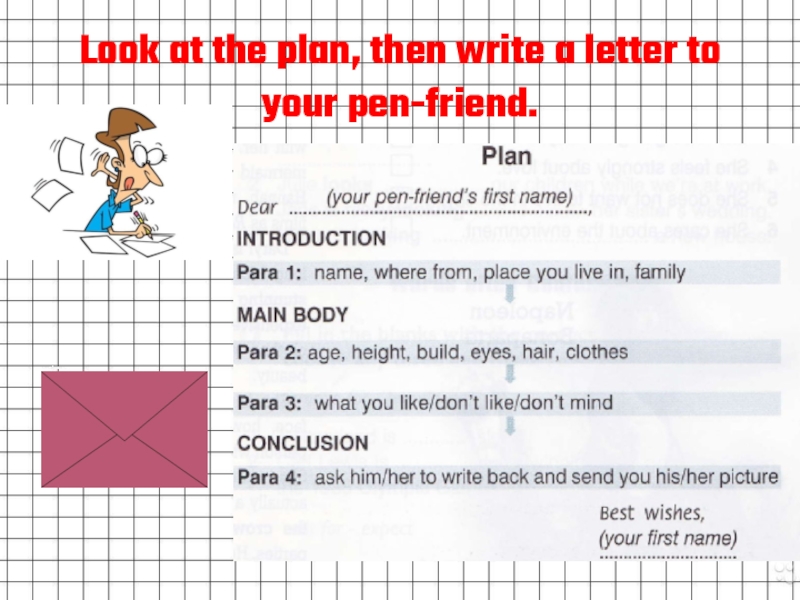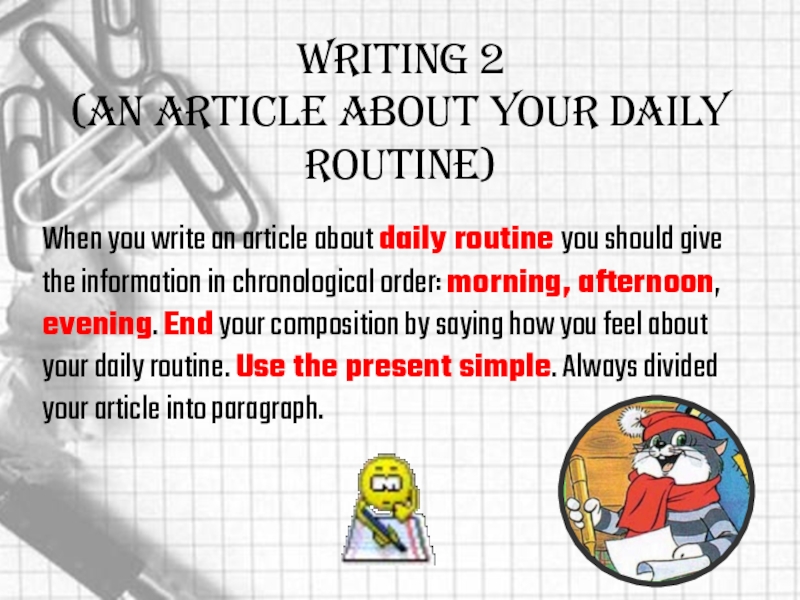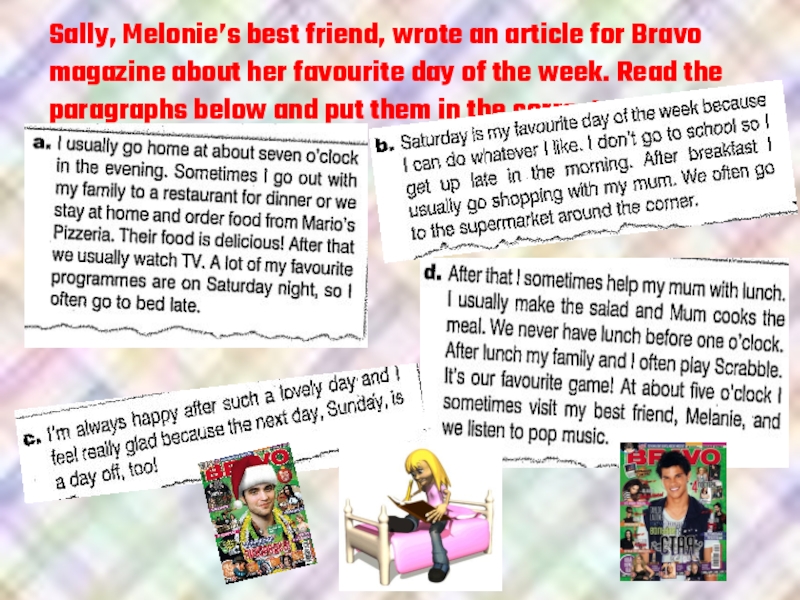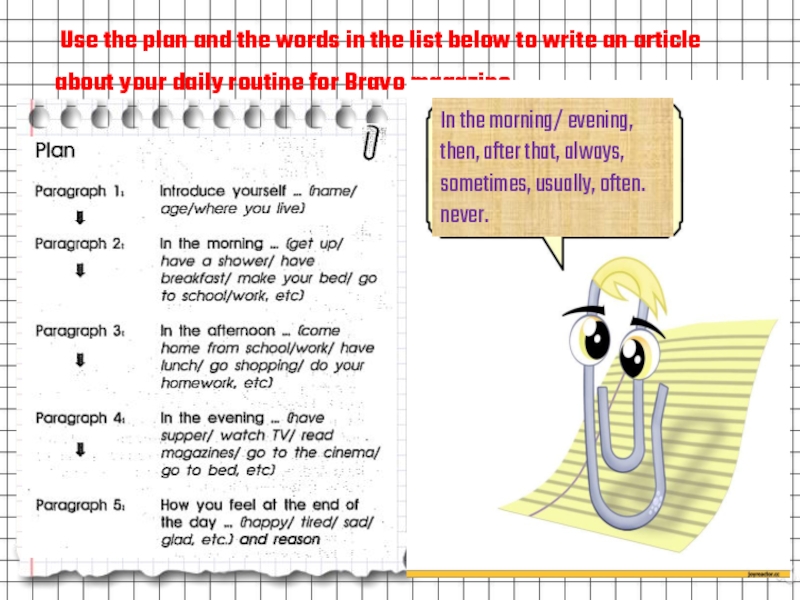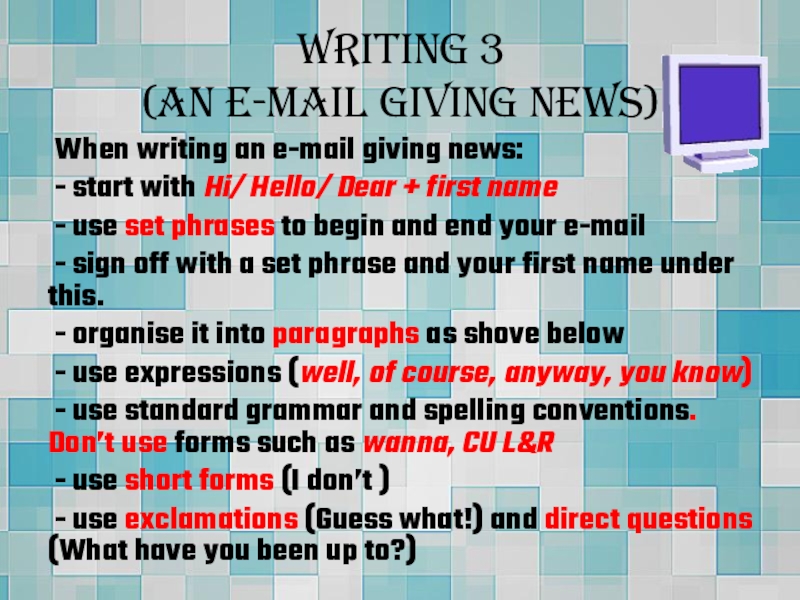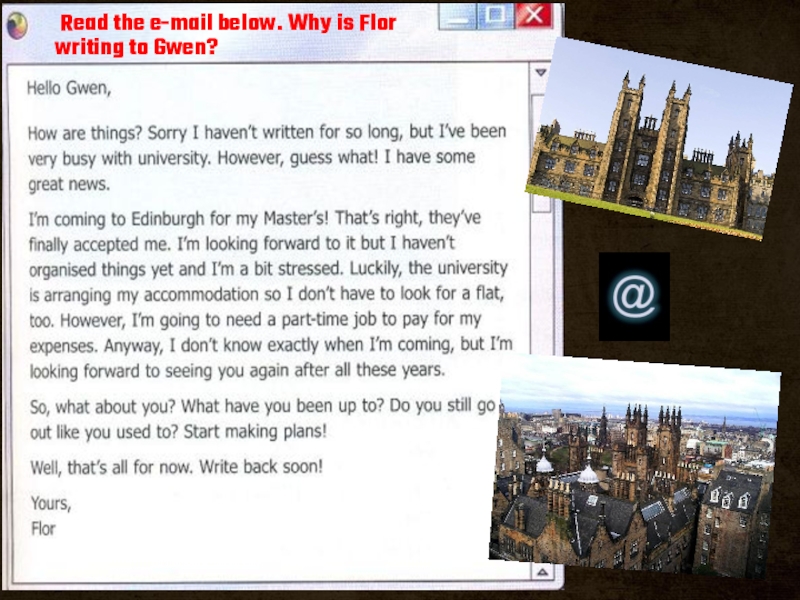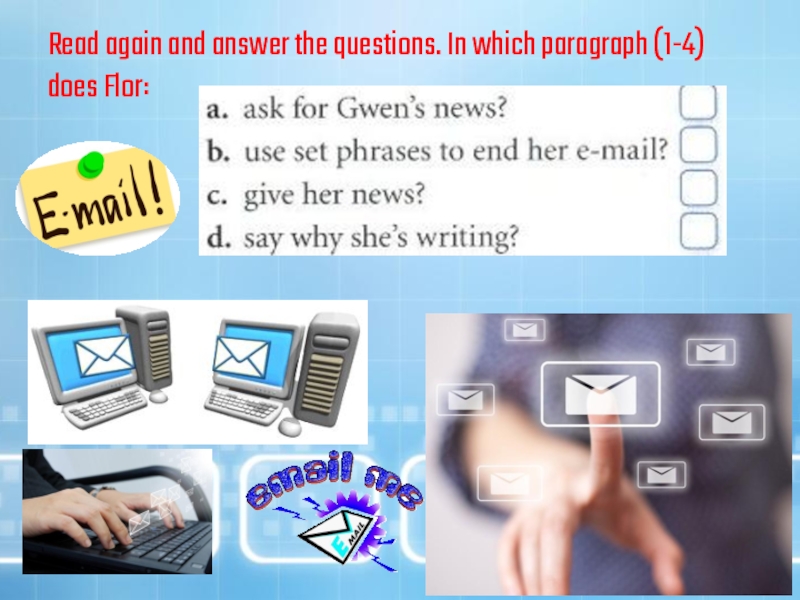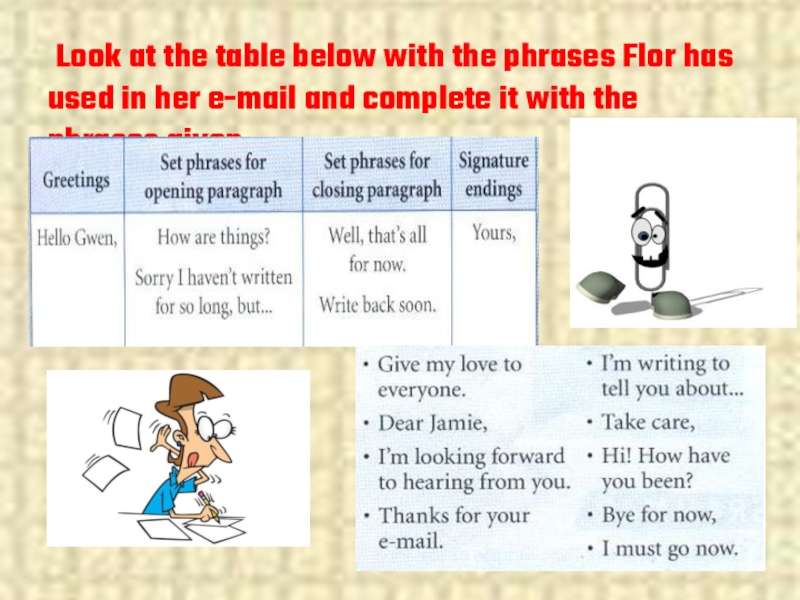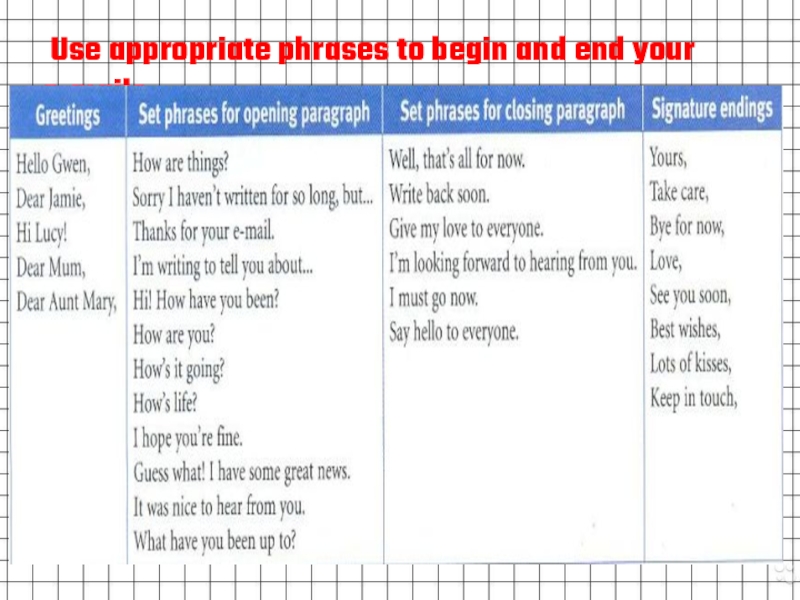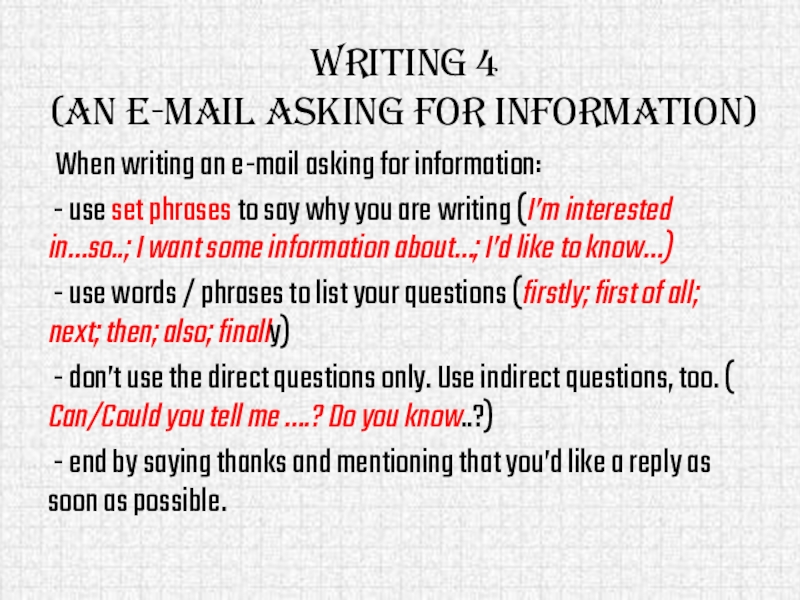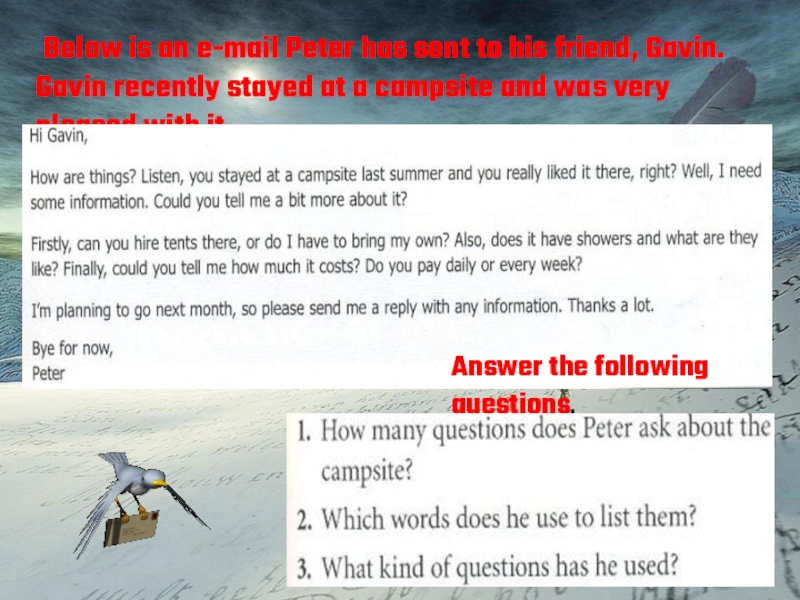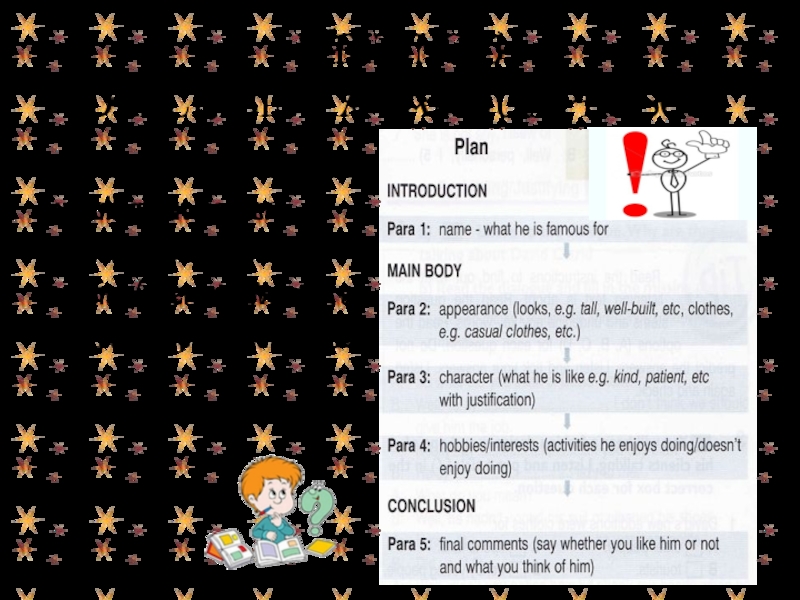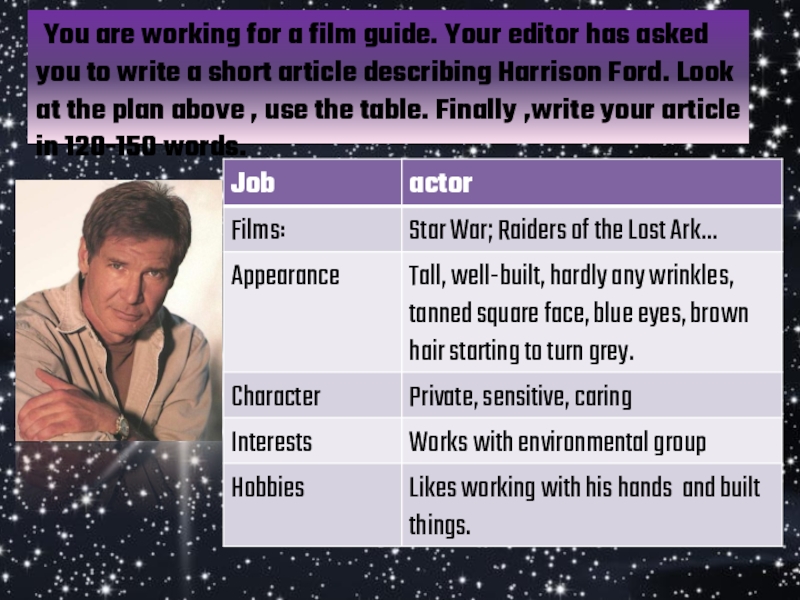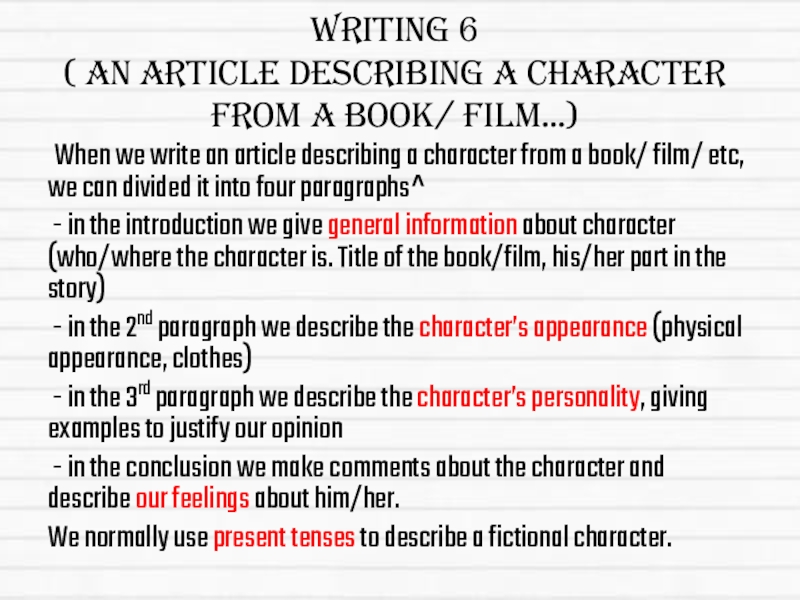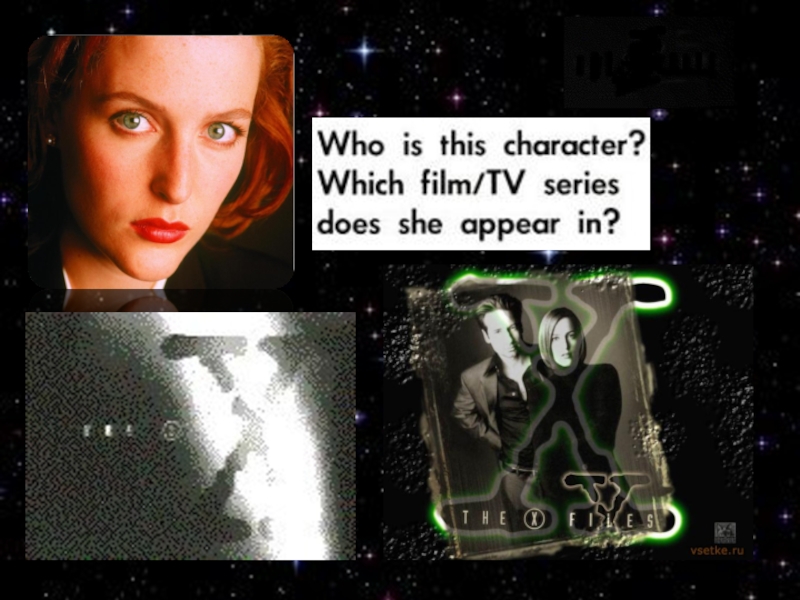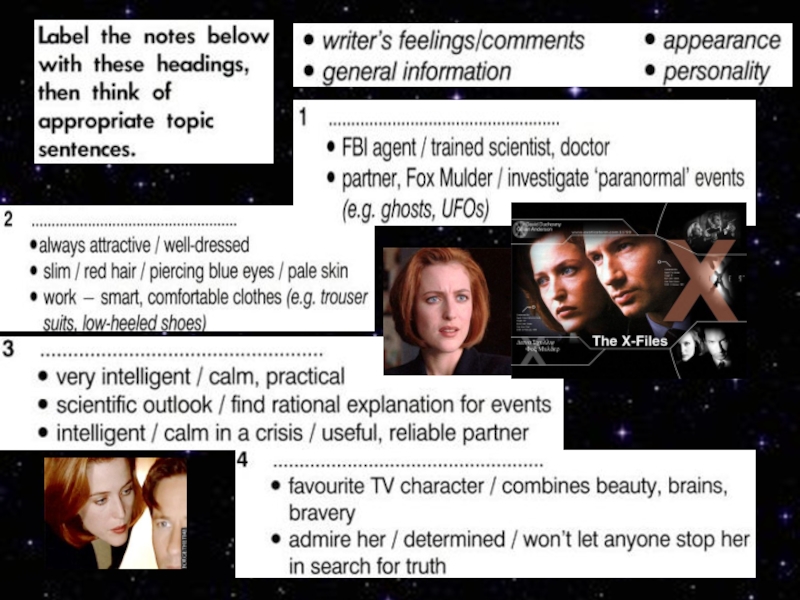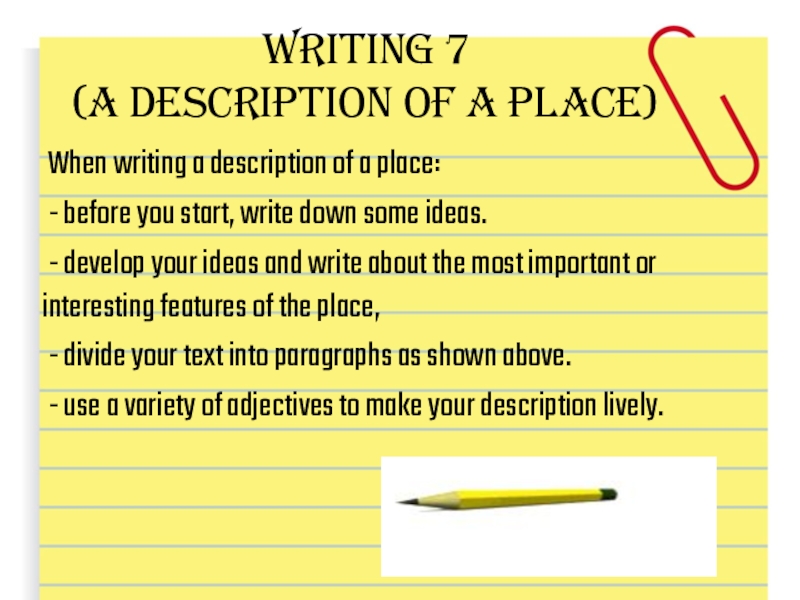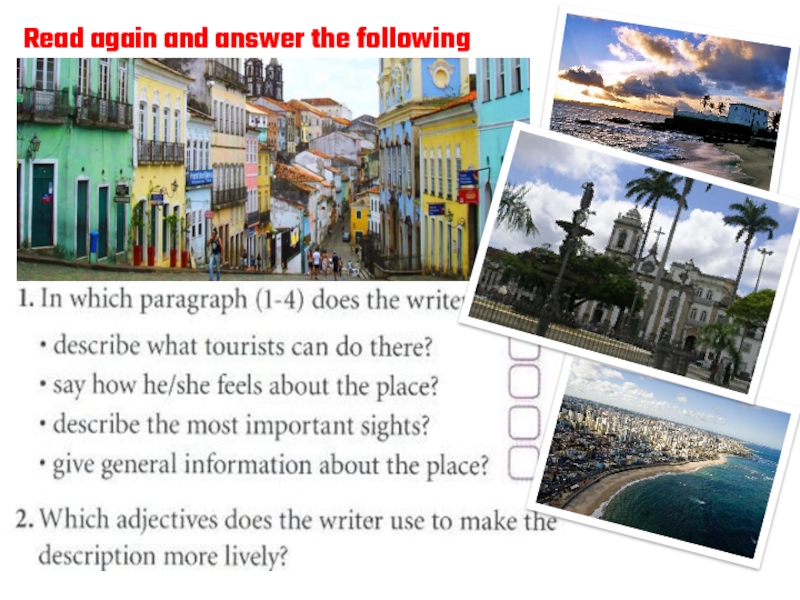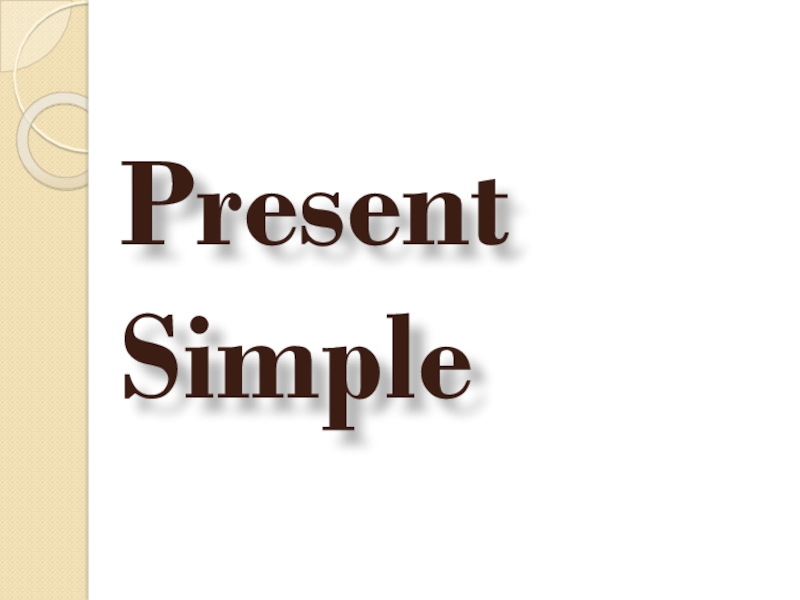- Главная
- Разное
- Образование
- Спорт
- Естествознание
- Природоведение
- Религиоведение
- Французский язык
- Черчение
- Английский язык
- Астрономия
- Алгебра
- Биология
- География
- Геометрия
- Детские презентации
- Информатика
- История
- Литература
- Математика
- Музыка
- МХК
- Немецкий язык
- ОБЖ
- Обществознание
- Окружающий мир
- Педагогика
- Русский язык
- Технология
- Физика
- Философия
- Химия
- Шаблоны, фоны, картинки для презентаций
- Экология
- Экономика
Презентация, доклад по английскому языку для подготовки к ЕГЭ Lessons of writing
Содержание
- 1. Презентация по английскому языку для подготовки к ЕГЭ Lessons of writing
- 2. Writing 1 ( a letter to
- 3. Fill in the correct sentence I love
- 4. Look at the plan, then write a letter to your pen-friend.
- 5. Writing 2 (an article about your daily
- 6. Sally, Melonie’s best friend, wrote an article
- 7. Use the plan and the words
- 8. Writing 3 (an e-mail giving news) When
- 9. Read the e-mail below. Why is Flor writing to Gwen?
- 10. Read again and answer the questions. In which paragraph (1-4) does Flor:
- 11. Look at the table below with
- 12. Use appropriate phrases to begin and end your e-mails.
- 13. Writing 4 (an e-mail asking for information)
- 14. Below is an e-mail Peter has
- 15. Writing 5 (describing a famous person) When
- 16. Fill in the correct derivatives of the words in bold. What paragraph about?
- 17. You are working for a film
- 18. Writing 6 ( an article describing a
- 19. Слайд 19
- 20. Слайд 20
- 21. Writing 7 (a description of a place)
- 22. Read the text and choose
- 23. Read again and answer the following questions
- 24. Слайд 24
Writing 1 ( a letter to a pen-friend)A letter to a pen-friend is an informal letter. We always start our letter with Dear and our friend’s first name . In the first paragraph (introduction) we
Слайд 2Writing 1
( a letter to a pen-friend)
A letter to a
pen-friend is an informal letter. We always start our letter with Dear and our friend’s first name . In the first paragraph (introduction) we write our first name, country of origin and some information about our family. The main body usually consists of two paragraphs. In the second paragraph we describe ourselves. In the third paragraph we write our likes and/or dislikes. Each paragraph starts with a topic sentence i.e. a sentence which introduces the topic of the paragraph. In the last paragraph (conclusion) we write our closing remarks. We end our letter with Best wishes and our first name.
Слайд 3Fill in the correct sentence
I love sports
My name is Ben
Smith and I’m from England
I’m twelve years old.
I’m twelve years old.
Слайд 5Writing 2
(an article about your daily routine)
When you write an article
about daily routine you should give the information in chronological order: morning, afternoon, evening. End your composition by saying how you feel about your daily routine. Use the present simple. Always divided your article into paragraph.
Слайд 6Sally, Melonie’s best friend, wrote an article for Bravo magazine about
her favourite day of the week. Read the paragraphs below and put them in the correct order.
Слайд 7 Use the plan and the words in the list below
to write an article about your daily routine for Bravo magazine.
In the morning/ evening,
then, after that, always,
sometimes, usually, often.
never.
Слайд 8Writing 3
(an e-mail giving news)
When writing an e-mail giving news:
- start with Hi/ Hello/ Dear + first name
- use set phrases to begin and end your e-mail
- sign off with a set phrase and your first name under this.
- organise it into paragraphs as shove below
- use expressions (well, of course, anyway, you know)
- use standard grammar and spelling conventions. Don’t use forms such as wanna, CU L&R
- use short forms (I don’t )
- use exclamations (Guess what!) and direct questions (What have you been up to?)
- use set phrases to begin and end your e-mail
- sign off with a set phrase and your first name under this.
- organise it into paragraphs as shove below
- use expressions (well, of course, anyway, you know)
- use standard grammar and spelling conventions. Don’t use forms such as wanna, CU L&R
- use short forms (I don’t )
- use exclamations (Guess what!) and direct questions (What have you been up to?)
Слайд 11 Look at the table below with the phrases Flor has
used in her e-mail and complete it with the phrases given.
Слайд 13Writing 4
(an e-mail asking for information)
When writing an e-mail asking
for information:
- use set phrases to say why you are writing (I’m interested in…so..; I want some information about…; I’d like to know…)
- use words / phrases to list your questions (firstly; first of all; next; then; also; finally)
- don’t use the direct questions only. Use indirect questions, too. ( Can/Could you tell me ….? Do you know..?)
- end by saying thanks and mentioning that you’d like a reply as soon as possible.
- use set phrases to say why you are writing (I’m interested in…so..; I want some information about…; I’d like to know…)
- use words / phrases to list your questions (firstly; first of all; next; then; also; finally)
- don’t use the direct questions only. Use indirect questions, too. ( Can/Could you tell me ….? Do you know..?)
- end by saying thanks and mentioning that you’d like a reply as soon as possible.
Слайд 14 Below is an e-mail Peter has sent to his friend,
Gavin. Gavin recently stayed at a campsite and was very pleased with it.
Answer the following questions.
Слайд 15Writing 5
(describing a famous person)
When we describe a person, we
talk about his/her appearance, character and hobbies/interests. We start a new paragraph for each topic.
Слайд 17 You are working for a film guide. Your editor has
asked you to write a short article describing Harrison Ford. Look at the plan above , use the table. Finally ,write your article in 120-150 words.
Слайд 18Writing 6
( an article describing a character from a book/ film…)
When we write an article describing a character from a book/ film/ etc, we can divided it into four paragraphs^
- in the introduction we give general information about character (who/where the character is. Title of the book/film, his/her part in the story)
- in the 2nd paragraph we describe the character’s appearance (physical appearance, clothes)
- in the 3rd paragraph we describe the character’s personality, giving examples to justify our opinion
- in the conclusion we make comments about the character and describe our feelings about him/her.
We normally use present tenses to describe a fictional character.
- in the introduction we give general information about character (who/where the character is. Title of the book/film, his/her part in the story)
- in the 2nd paragraph we describe the character’s appearance (physical appearance, clothes)
- in the 3rd paragraph we describe the character’s personality, giving examples to justify our opinion
- in the conclusion we make comments about the character and describe our feelings about him/her.
We normally use present tenses to describe a fictional character.
Слайд 21Writing 7
(a description of a place)
When writing a description of
a place:
- before you start, write down some ideas.
- develop your ideas and write about the most important or interesting features of the place,
- divide your text into paragraphs as shown above.
- use a variety of adjectives to make your description lively.
- before you start, write down some ideas.
- develop your ideas and write about the most important or interesting features of the place,
- divide your text into paragraphs as shown above.
- use a variety of adjectives to make your description lively.
